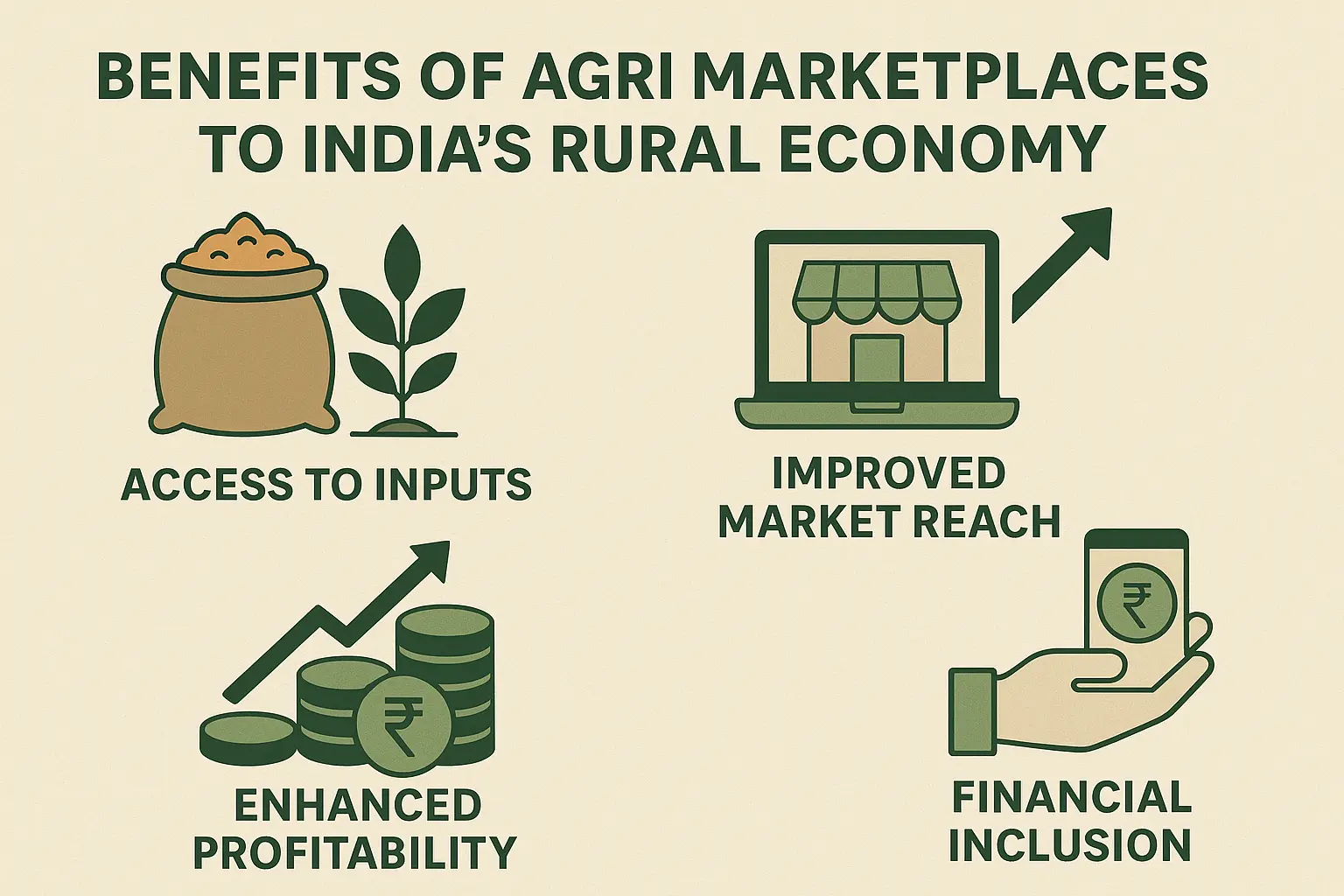India’s rural economy has always revolved around agriculture. With nearly 65% of the rural workforce engaged in farming, agriculture forms the backbone of livelihoods in villages. However, for decades, smallholder farmers struggled with inefficiencies such as a lack of fair pricing, dependence on middlemen, limited access to markets, and information asymmetry.
The rise of digital agri marketplaces is changing this story. Today, platforms like StarAgri, a fast-growing agritech marketplace in India, are bridging the gap between farmers, buyers, and service providers, making agriculture more profitable and transparent.
Evolution of Agri Marketplaces in India
Traditionally, farmers sold their produce through mandis (APMC markets), often facing exploitation and low price realization. Over the last decade, the agricultural sector has witnessed a digital revolution. Government initiatives like the National Agriculture Market (eNAM) introduced farmers to online trading, while technology-driven platforms expanded access to inputs, advisory, and markets.
Today, agri marketplaces are not just known for trading, but they offer complete ecosystems where farmers can sell crops, buy seeds and fertilizers, access credit, and receive agronomy advice, all from a mobile app.
Key Drivers Behind the Growth
Several factors have accelerated the adoption of digital agri marketplaces in rural India:
Rising Smartphone & Internet Penetration
India’s rural internet user base crossed 350 million in 2022. With affordable data and smartphones, farmers are increasingly accessing digital platforms to sell and buy agricultural produce.
Government Push Towards Digitization
Digital India initiatives and rural broadband programs are enabling smoother adoption of online services, including agriculture marketplaces.
Access to Finance & Innovation
Digital platforms integrate with fintech solutions, allowing farmers to access micro-credit, crop loans, and insurance. This financial empowerment is critical for smallholder farmers.
Changing Farmer Mindsets
Farmers are now willing to bypass traditional middlemen and explore digital solutions that provide better price discovery and direct market access.
Benefits of Agri Marketplaces to India’s Rural Economy

The growth of agri marketplaces is not just a technological shift; it’s a socio-economic transformation.
- Fair Pricing & Transparency – Farmers can see real-time market prices and negotiate better.
- Market Expansion – Access to buyers beyond their local mandis increases income opportunities.
- Reduced Middlemen Dependency – Direct farm-to-buyer transactions help farmers retain higher profits.
- Improved Logistics – Many platforms facilitate storage, cold chain, and faster delivery.
- Financial Inclusion – Integration with credit and insurance safeguards farmers against risks.
Key Obstacles in Digital Agriculture Platforms
While progress is significant, some roadblocks remain:
- Digital Literacy: Many farmers still need handholding to use apps effectively.
- Connectivity Issues: Some rural pockets lack stable internet.
- Trust in Online Platforms: Farmers are cautious about payments and delivery timelines.
- Infrastructure Gaps: Cold storage, warehousing, and transport logistics remain critical.
Future of India’s Agritech Ecosystem
The future looks promising, driven by technology and collaboration.
- AI & IoT in Farming: Smart sensors and AI tools will help farmers track soil health, forecast demand, and improve productivity.
- Blockchain for Traceability: Ensuring transparency in supply chains will increase trust.
- Integration with Fintech: Platforms will become one-stop shops for credit, insurance, and payments.
- Community-Led Growth: Farmer Producer Organizations (FPOs) will play a stronger role in scaling adoption.
How StarAgri is Transforming India’s Agri Economy
StarAgri is more than just an agri marketplace; it is a comprehensive agritech ecosystem designed to empower rural farmers. By combining technology with deep farmer engagement, StarAgri offers:
- Direct marketplace for farm produce.
- Access to high-quality seeds, fertilizers, and inputs.
- Personalized crop advisory and weather insights.
- Integration with financial institutions for loans and insurance.
- Efficient logistics and delivery solutions.
By connecting farmers directly to markets, StarAgri ensures fair trade, higher incomes, and sustainable farming practices.
Conclusion
The rise of agri marketplaces in India is rewriting the future of farming. By empowering farmers with technology, transparency, and direct market access, these platforms are fueling the growth of India’s rural economy.
With its farmer-first approach, StarAgri is at the forefront of this transformation, building a connected, profitable, and sustainable agricultural ecosystem for millions of farmers.
Frequently Asked Questions (FAQs)
Q1. What is an agri marketplace?
An agri marketplace is an online platform that connects farmers with buyers and service providers, enabling transparent trading of commodities, inputs, and services.
Q2. How do agri marketplaces benefit Indian farmers?
They ensure fair pricing, reduce dependence on middlemen, improve logistics, and provide access to inputs and financial services.
Q3. Is StarAgri available across India?
Yes, StarAgri is expanding rapidly across India, serving farmers in 18+ states with digital trading, inputs, and advisory services.
Q.4. What role will technology play in future farming?
Technologies like AI, blockchain, and IoT will help farmers increase productivity, reduce waste, and build more transparent supply chains.
Disclaimer
The content published on this blog is provided solely for informational and educational purposes and is not intended as professional or legal advice. While we strive to ensure the accuracy and reliability of the information presented, StarAgri make no representations or warranties of any kind, express or implied, about the completeness, accuracy, suitability, or availability with respect to the blog content or the information, products, services, or related graphics contained in the blog for any purpose. Any reliance you place on such information is therefore strictly at your own risk. Readers are encouraged to consult qualified agricultural experts, agronomists, or relevant professionals before making any decisions based on the information provided herein. StarAgri, its authors, contributors, and affiliates shall not be held liable for any loss or damage, including without limitation, indirect or consequential loss or damage, or any loss or damage whatsoever arising from reliance on information contained in this blog. Through this blog, you may be able to link to other websites that are not under the control of StarAgri. We have no control over the nature, content, and availability of those sites and inclusion of any links does not necessarily imply a recommendation or endorsement of the views expressed within them. We reserve the right to modify, update, or remove blog content at any time without prior notice.



